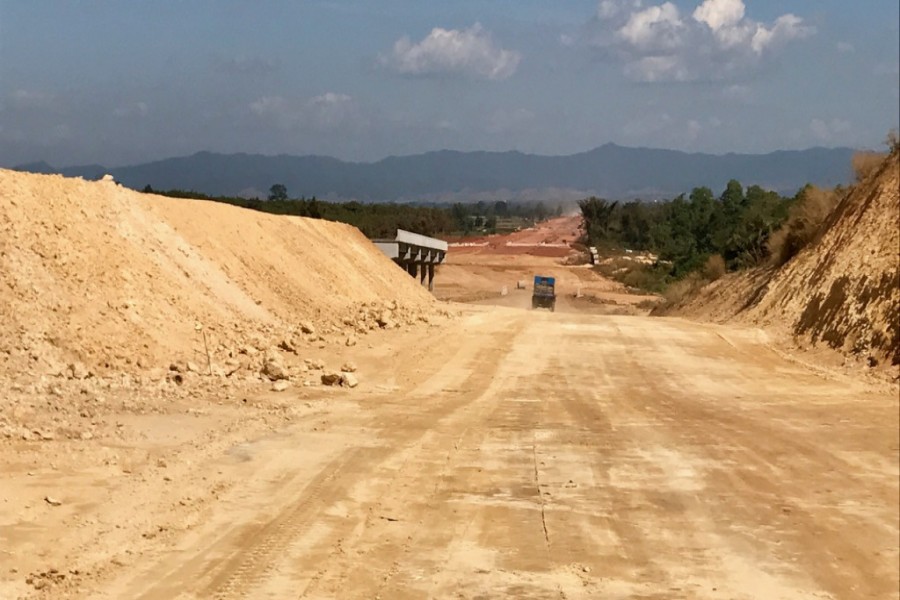Economic corridors are geographically targeted development initiatives currently under construction on nearly every continent of the planet. While hard infrastructure such as transportation links, power generation, ports, and industrial zones contrive a spine, economic corridors are distinguished by accompanying “soft infrastructure” including business-friendly policies, regulations, and institutions to facilitate trade and investment.
They feature prominently in foreign policy and development initiatives worldwide and have provided scaffolding for billions of dollars’ worth of infrastructure investments. They will likely do the same for those spurred by the “Build Back Better World (B3W) Partnership” recently announced by the G7.
Yet despite being around for over twenty years, relatively little has been written about economic corridors beyond the grey literature supported by multilateral development banks.
Notable exceptions to this dearth of conceptual engagement include those framing them as technologies of nationhood (in Malaysia), a form of licensed larceny (in Africa), tools of containment and enclosure (in China), and neoliberal institutions and new frontiers of capital (in India).
In an article recently published in the Review of International Studies I contribute to this literature on corridors and infrastructure by proposing we should understand economic corridors as an essentially extractivist paradigm: a constellation of policy prescriptions that advance processes of valorisation and accumulation based on the subjugation of human and extra human nature to intensified exploitation. The adjective ‘extractivist’ here denotes a process whereby capital draws on its multiple outsides as it depletes the social bases of wealth. This includes but is not limited to the plundering of the earth and biosphere, extending also to social dimensions of exploitation, such as the reorganisation of production and social relations that enable production.
The Conventional Rationale: The article thereby offers a Marxist-inspired structuralist account of the global political economy of corridor building that challenges the salubrious view of economic corridors as tools for development found in the grey literature. To do so, it outlines what I call the “conventional rationale” that is used by multilateral development banks and donor states to convince dominated states and classes of their utility as a means to inclusive and sustainable development. This draws on classical and neoclassical principles in economic policy and planning, the so-called “new trade theory” and the “new economic geography”. To challenge this dominant understanding the article outlines four key contentions that contest important pillars on which it rests.
Economic Corridors as an Extractivist Paradigm: The first is that corridors are a “fix” for crises of capitalism. While the conventional paradigm presents corridors as tools to facilitate investments in underdeveloped regions, the article contends corridors should instead be understood as tools that offset crises of over-accumulation by securing corporate profitability amid stagnation and decline in dominant states and regions.
The second is that corridors exacerbate class struggle. The conventional paradigm rests on a view of globalisation as a benign equilibrium-seeking process where market forces freed from state interference work to benefit all. The article contends instead that economic corridor development is precipitated by and exacerbates class struggle, empowering fractions of capital over those of labour, the environment, and the public. This generates novel social forces such as new proletariat classes and alliances of business elites and actors harnessing state power to accumulate wealth, leading to new forms of exploitation, dispossession, marginalisation, and exclusion.
The third is that corridors are tools for exploitation. While the conventional paradigm presents them as tools for development by allowing developing countries to participate in the global economy “on a shoestring” by engaging in low technology and labour intensive production, the article contends instead that economic corridors exacerbate the exploitation of human and extra-human nature, facilitating extraction of wealth through unequal exchange, contributing to divergence and polarisation along new geographical and class-based lines.
The fourth and final contention is that corridors facilitate financial extraction. While the conventional paradigm presents the financialisation of infrastructure associated with corridors as a way of mobilising finance for development, the article contends this should instead be understood as an additional mechanism for the extraction of wealth from dominated states and classes. It therefore echoes Hildyard’s argument that infrastructure mega-corridors are tools for developing finance, not financing development.
A Framework for Future Research on Economic Corridors: The article is developed with empirical reference to economic corridors in mainland Southeast Asia, recognised as the first and one of the most ambitious programs worldwide, but it aims to identify a set of extractivist dynamics integral to the concept of economic corridors and hence also operative elsewhere. To this end, it calls for further empirical work on corridors across the globe to help generalise the framework and refine it.
This may take inspiration from the article by exploring, for example: (a) To what extent corridor development elsewhere has been driven by attempts to offset capitalism’s crisis tendencies through various extractivist “fixes”? Might corridors be transformed into investments that contribute to substantive development? (b) How have subaltern classes beyond the Mekong region been impacted by corridor development? What forms of struggle have been waged and how might they be strengthened? (c) How much wealth has been extracted through corridor-related infrastructure? Are we able to quantify value transfers directly attributable to these corridors to challenge mainstream metrics of success related to FDI inflows and GDP output? (d) Might subaltern classes leverage emerging geopolitical tensions between, say, the G7 and China to secure concessions and enhance their power in institutions influencing corridor development and governance?
The four theses proposed in the article are not intended to be exhaustive, and readers of this blog may find additional propositions help better understand the essentially extractivist nature of economic corridors, or offer further empirical data in support of the argument. My expectation is that the article stimulates more critical discussion on these initiatives in order to shed more light on the impacts of these corridors, particularly on dominated states and classes.
Charlie Thame is an Assistant Professor of International Relations in the Faculty of Political Science, Thammasat University, Thailand. The piece is excerpted from The Developing Economics blog. www.developingeconomics.org


